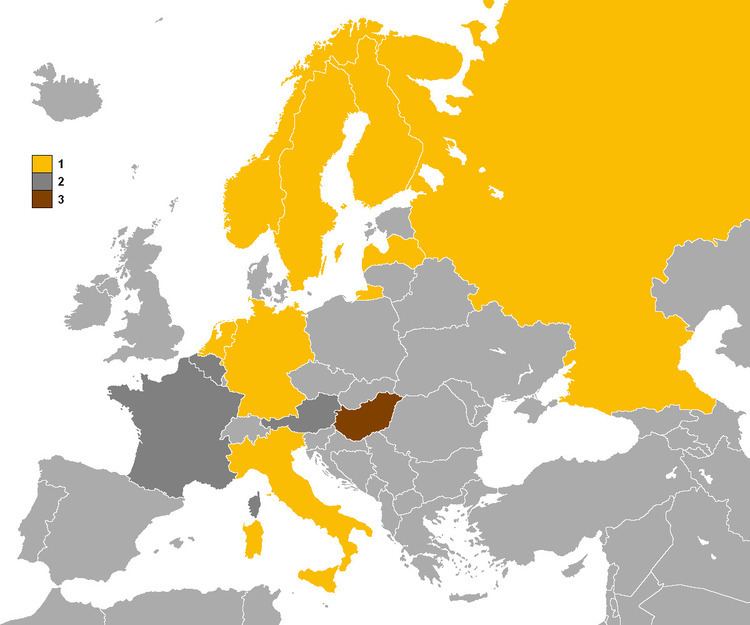The International Skating Union has organised the European Speed Skating Championships for Men since 1893. Unofficial championships were held in the years 1891–1892.
In the years 1891–1892, three distances had to be skated: ⅓ mile (536 m) – 1 mile (1,609 m) – 3 miles (4,828 m).In the years 1893–1895, three distances had to be skated: 500 m – 1500 m – 5000 m.In the years 1896–1935, four distances had to be skated: 500 m – 1500 m – 5000 m – 10000 m (the big combination).In the years 1936–1947, four distances had to be skated: 500 m – 1500 m – 3000 m – 5000 m (the small combination).In the years 1948–2017, four distances had to be skated: 500 m – 1500 m – 5000 m – 10000 m (the big combination).Starting in 2017, a separate competition with four distances is held: 500 m – 1000 m – 500 m – 1000 m (the sprint combination).Note that at the 1967 European Championships in Lahti, Finland, it was so cold that the officials decided that they did not want to expose the skaters to the extreme cold for a long time and so they replaced the 10000 m event with a 3000 m event, in effect using the small combination distances instead of the big combination ones.
In the years 1891–1892, one could only win the European Championships by winning all three distances. If no one won all three distances, no winner would be declared. Silver and bronze medals were not awarded.In the years 1893–1907, one could only win the European Championships by winning the majority of the distances, so there would be no European Champion if no skater won at least three distances (two distances in the years 1893–1895, when only three distances were skated). Silver and bronze medals were never awarded.In the years 1908–1925, ranking points were awarded (1 point for 1st place, 2 points for 2nd place, and so on); the final ranking was then decided by ordering the skaters by lowest point totals. The rule that a skater winning at least three distances was automatically European Champion was still in effect, though, so the ranking could be affected by that. Silver and bronze medals were awarded now as well.In the years 1926–1927, the ranking points on each distance were percentage points, calculated from a skater's time and the current European record time. Apart from that, the system used was the same as in the immediately preceding years.Since 1928, the samalog system has been in use.Note that from 1936 to 1948, non-European skaters were allowed to participate if they were members of European skating clubs.

